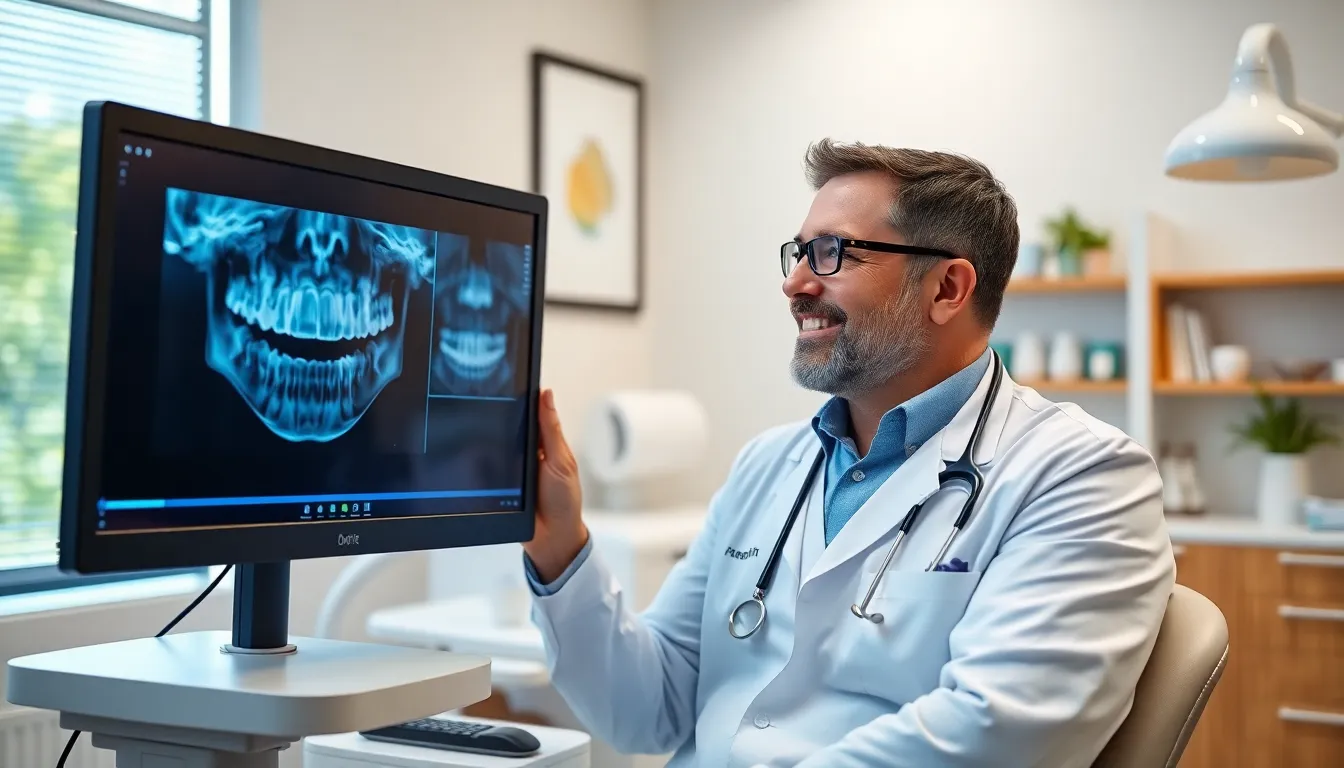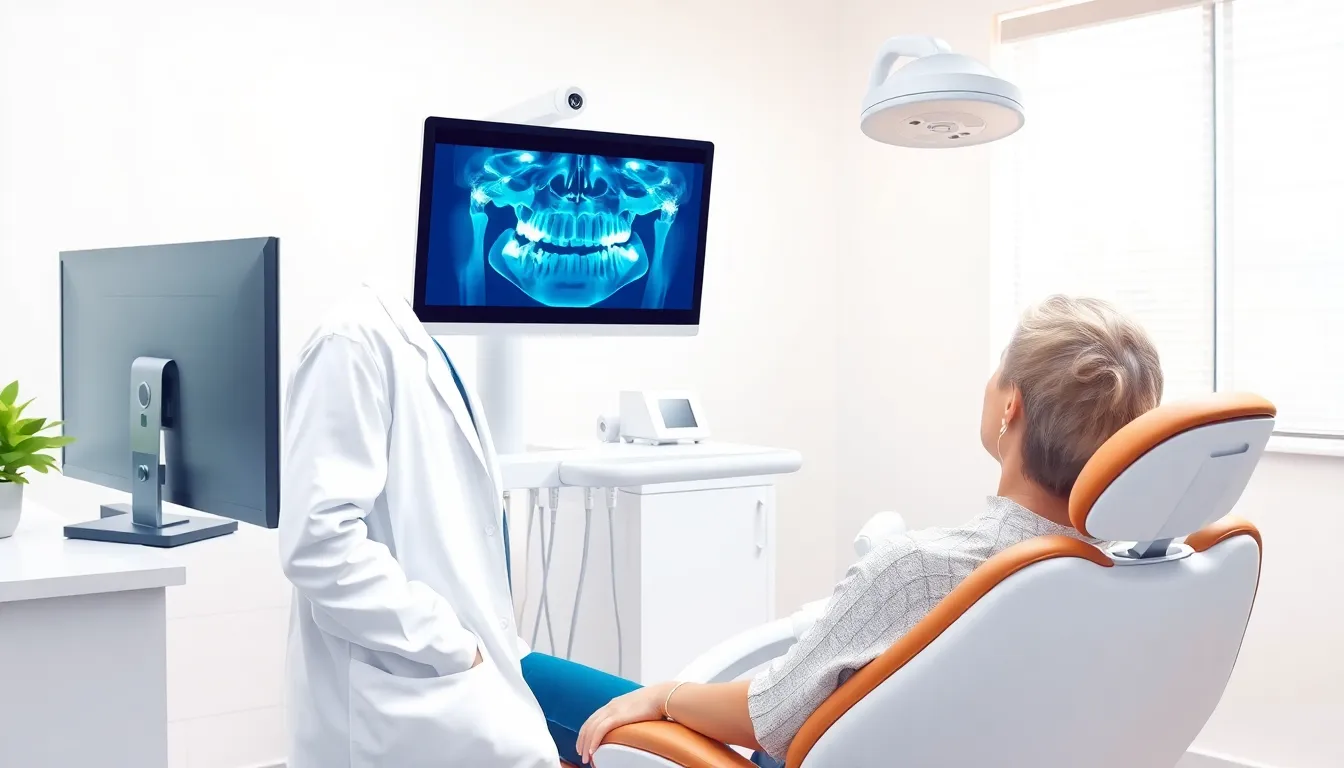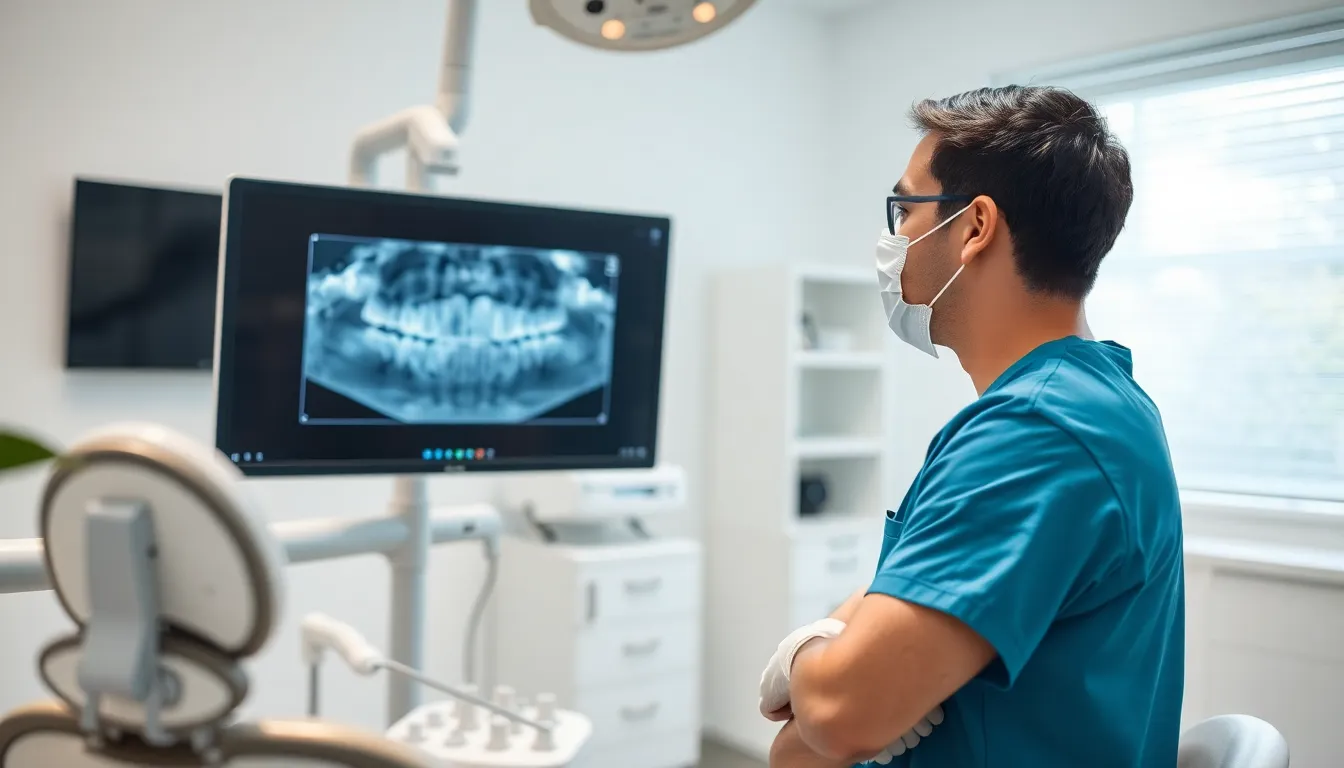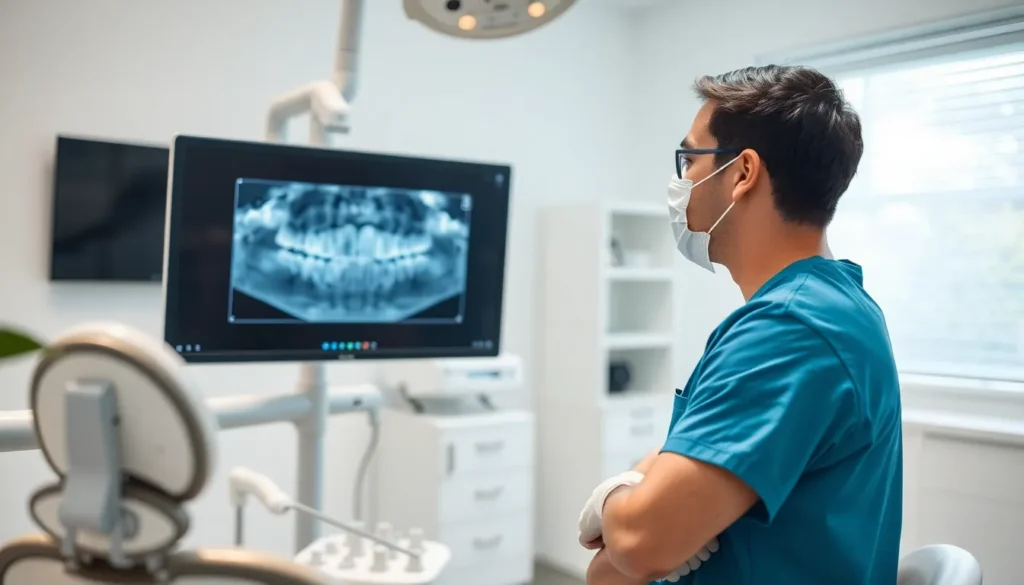Table of Contents
ToggleWhen it comes to dental care, most people think of the dreaded drill and the infamous chair. But what if there’s a way to make that trip to the dentist a bit less terrifying? Enter digital dental X-rays—the superhero of the dental world. These high-tech images not only make diagnosing issues easier but also save time and reduce radiation exposure.
What Are Digital Dental X-Rays?
Digital dental X-rays are advanced imaging technologies used in dental practices. These X-rays capture detailed images of a patient’s teeth, gums, and surrounding structures. Unlike traditional film X-rays, digital X-rays utilize electronic sensors to produce immediate images, enhancing diagnostic accuracy.
Radiation exposure significantly decreases with digital X-rays, making them a safer option for patients. Studies indicate that digital X-rays emit up to 90% less radiation compared to their film counterparts. Faster processing times allow dentists to quickly assess oral health, increasing efficiency during appointments.
These digital images can be easily stored and shared. Practices employ secure cloud storage for patient information, facilitating quick access among healthcare providers. Additionally, enhanced image quality leads to better visualization of dental issues such as cavities, decay, or gum disease.
Dentists can manipulate digital images, adjusting contrast and brightness as needed. This feature supports detailed analysis and assists in making informed treatment decisions. Many systems also provide the option for patients to view their X-rays in real-time, promoting transparency and engagement in their care.
Overall, digital dental X-rays represent a significant evolution in dental diagnostics. They prioritize patient safety, improve efficiency, and enhance communication between dentists and patients. By adopting this technology, dental practices can provide a modern patient experience with superior care.
Advantages of Digital Dental X-Rays


Digital dental X-rays offer significant advantages over traditional imaging methods. These enhancements contribute to safer and more effective dental care.
Enhanced Image Quality
Enhanced image quality stands out as a key benefit of digital dental X-rays. Images produced are highly detailed, allowing for better visualization of dental conditions. Dentists appreciate the ability to zoom in and manipulate images for thorough analysis. Superior resolution highlights issues such as cavities and bone loss more clearly than traditional methods. Patients can see their dental problems in real-time, fostering understanding and informed decision-making.
Reduced Radiation Exposure
Reduced radiation exposure is another critical advantage. Digital X-rays emit up to 90% less radiation compared to film X-rays. This significant reduction prioritizes patient safety, especially for vulnerable populations such as children and pregnant women. Dentists can efficiently assess a patient’s dental health while minimizing risks associated with radiation. By utilizing this technology, dental practices ensure patients receive safe and effective care during their visits.
Immediate Results
Immediate results enhance the overall patient experience. Digital dental X-rays provide instant imaging, eliminating the wait for developing film. Efficiency during appointments increases, allowing dentists to diagnose and discuss treatment options promptly. Quick access to diagnostic images facilitates timely interventions, improving patient outcomes. This rapid turnaround supports seamless communication between dentists and patients, creating a more informative and engaging consultation process.
Comparison to Traditional X-Rays
Digital dental X-rays provide distinct advantages over traditional X-rays, enhancing patient care while streamlining dental practices. Their impact is noticeable in various aspects.
Cost Considerations
Cost differences between digital and traditional X-rays can influence a dental practice’s choice. Initial investments in digital X-ray systems are higher, typically ranging from $15,000 to $40,000. However, these systems often yield long-term savings by reducing costs associated with film, processing materials, and storage. Dentists can minimize overhead expenses, benefiting from quicker diagnostic capabilities. Furthermore, with a reduced need for retakes due to improved image quality, practices can achieve cost-efficiency. Patients may see lower overall costs as enhanced diagnostics lead to better treatments and preventive care.
Software Capabilities
Software enhancements play a pivotal role in the superiority of digital dental X-rays. Digital imaging systems now feature advanced software applications that enhance image analysis, allowing dentists to detect dental issues earlier. These applications offer tools for manipulating images, improving visualization, and providing detailed views of underlying structures. Additionally, the integration of artificial intelligence aids in identifying potential problems, expediting diagnosis significantly. Real-time image enhancement optimizes communication between dentists and patients, as both can view and discuss the images during appointments. Besides, seamless integration with practice management software fosters efficient workflow, promoting better patient management.
Applications in Dentistry
Digital dental X-rays play a crucial role in various dental applications. Their use extends beyond mere imaging, enhancing overall patient care.
Diagnostics
Enhanced diagnostic capabilities characterize digital dental X-rays. They provide clear, high-resolution images that reveal issues not easily detected by traditional X-rays. Dentists can identify cavities, bone loss, and root infections quickly. With up to 90% less radiation exposure, these X-rays prioritize patient safety. Immediate image availability allows for timely diagnoses, minimizing wait times during appointments. Furthermore, advanced software can assist in early detection, ensuring problems are addressed promptly.
Treatment Planning
Effective treatment planning relies heavily on digital dental X-rays. Detailed images enable dentists to assess a patient’s oral health comprehensively. By visualizing tooth structure and alignment, practitioners devise personalized treatment strategies. Digital files can be easily shared with specialists, ensuring collaborative care. Patients benefit from real-time visualizations, fostering understanding of proposed procedures. Enhanced communication between the dentist and patient supports informed decisions about treatment options. This technology streamlines the planning process, making it more efficient and patient-centered.
Digital dental X-rays are revolutionizing the way dental care is delivered. With their ability to provide immediate, high-resolution images, they not only enhance diagnostic accuracy but also significantly reduce radiation exposure. This technology fosters a more transparent relationship between dentists and patients, allowing for informed discussions about treatment options.
As dental practices continue to adopt these advanced imaging systems, patients can expect a more efficient and comfortable experience. The long-term benefits, including cost savings and improved patient safety, make digital dental X-rays an essential tool in modern dentistry. Embracing this technology is a step towards better oral health and a more positive dental experience for everyone.







